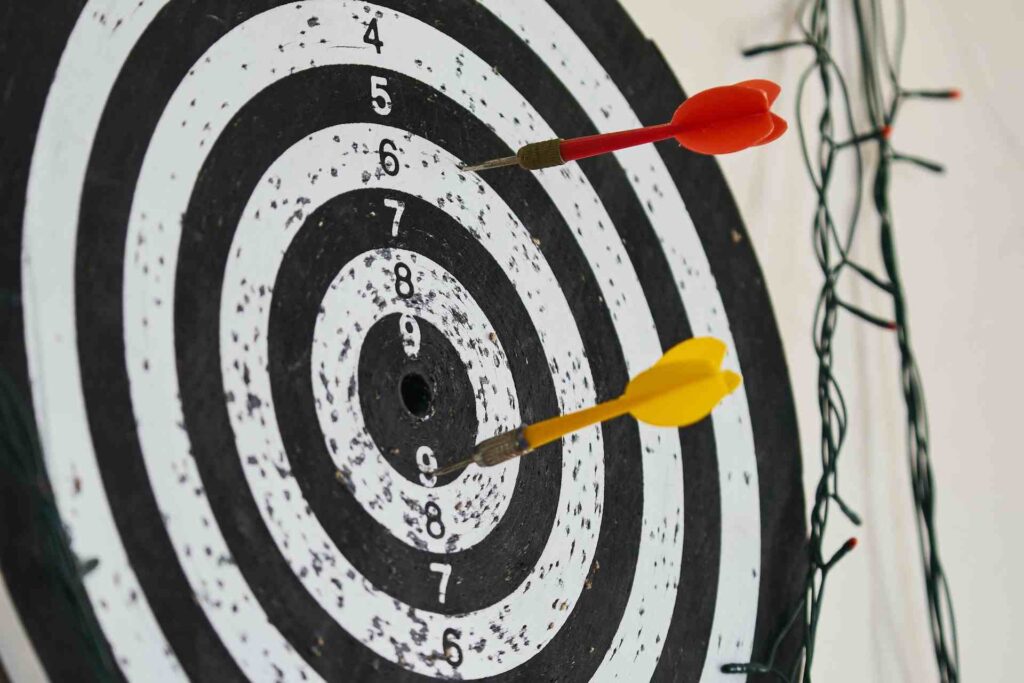Performance Indicators: Definition, Examples and Application

The performance indicators are fundamental for any company or organization.
Making an analogy, if our company were a ship One of its objectives would be to reach port safely. To do this, we need to know a series of indicators to know the current state of the weather or the ship itself. For example, wind direction and speed, sea level, humidity index or the amount of fuel available. These and other indicators will serve to make decisions and know if we are doing the right thing to reach our goal.
For this and more, it is useful to know regarding performance indicators. Immerse yourself in this Ninja Excel article, where we will define what these indicators are, some examples and how we can create one adjusted to the needs of each company.
Performance indicators: What are they? Definition
We define performance indicators as quantifiable measuring instruments, this refers to the performance of a person or an area to achieve a specific objective in a certain period of time.
The purpose to establish an indicator is to have “a reference value from which a comparison can be established between the planned goals and the achieved performance.”
performance indicators, You must provide us with accurate information, “about the functioning of our organization allowing the evaluation of results.”
KPI's: What does it mean?
It usually represents confusion when talking about performance indicators and KPIs. As we know, KPI is an acronym for Key Performance Indicators, which in Spanish means key performance indicators or performance. But what difference does adding the word “key” make?
In simple, A standard indicator or metric is just the number that indicates the value of a variable. For example, the billing amount of the sales area or incidents handled in customer service may simply be figures. However, by adding more “key” variables we can transform it into a KPI.
In accordance with KPI.org, KPIs provide a focus for strategic and operational improvementThey also “create an analytical basis for decision making and help focus attention on what matters most.” Following that line, from the Let's Think website, They add that KPIs provide “the performance information that allows organizations (or their stakeholders) understand whether or not the organization is on track toward its goals.”
Management with the use of KPIs includes establishing goals (the desired level of performance) and tracking the progress of those goals.

What is the importance of establishing performance indicators?
Specifically, establishing performance indicators will help and impact the actions of your organization. Here we exemplify you some reasons.
1) Improve the internal management of an organization to meet its objectives.
2) Increase efficiency in the allocation of resources.
3) Improve transparency with internal and external agents.
4) Monitor the achievement of the strategic objectives and products of an organization or company in favor of its objective.
image
What are the types of performance indicators? top 8
We can categorize these indicators according to the purpose they have. This is how we can classify them according to:
- Quantitative indicators: They can be presented with a particular number. Percentages, proportions, whole numbers or fractions to show grades, scores, counts, etc.
- Qualitative indicators: Based on a figure, it tells us a specific characteristic or quality. For example, a worker satisfaction survey can be an example of data that provides valuable information about the quality of your organization.
- Retracement Indicators: These indicators compare a company's current performance with its previous performance over a specific time period. Of according to Simple KPI, are easy to measure, since it is a simple value that indicates the improvement or not of a process. For example, the number of units produced in a manufacturing process between the first and second quarters of the current year.
- Input indicators: These indicators track the resources necessary to generate the expected result of an action, task or strategy. In this way, the organization will know the available resources before venturing into new actions.
- Output indicators: They measure the effectiveness of a particular process. For example, maintaining a high retention rate of your collaborators will indicate the goodness of your workplace wellness program or other benefits.
- Process indicators: Process indicators represent the efficiency of a company or organization's process and how effectively it operates.
- Directional indicators: They help determine the success of the company in comparison with competitors.
- Financial indicators: They are performance indicators that typically focus on revenue and profit margins. For example, liquidity, profitability or solvency indicators.
How to create a performance indicator?
If none of the performance indicators presented above serve to achieve your goals and objectives, no problem! Next, we will give you a series of tips to develop performance indicators.
1. Determine the final goal
Creating an indicator will be essential to have a holistic view of individual and organizational objectives. “Without a clear vision, you risk working on something that ultimately wastes time, energy, money and resources,” indicate from Indeed.
2. Ask questions that point to the “key”
Develop questions to determine the fulfillment of objectives. At first you can see them as very open questions. However, it is a starting point to then land the indicators towards more specific purposes. Example of key questions are:
- What result do I want to achieve?
- Why is this result important?
- How can I define progress?
- How can it affect the result?
- How will I know that I have reached my ultimate goal?
3. Contrast the available information
Before establishing the performance indicator, check if another area or collaborator is already collecting that information. “Collecting existing data also helps set a realistic target for the indicator.”
4. Collect supporting data
On the path to developing indicators, research is important. We suggest collecting all valuable information that is available. It is always pertinent to take a look at industry trends, demographic data, technology updates, etc.
Although the indicators presented above can be a basis and inspiration, it is also important to see what works for your company.
5. Set the frequency
It must be determined how and when the indicator measurement will be made. This should also include the tool you will use to extract the data in advance.
Keep in mind: performance indicators can evolve and be updated. As businesses evolve, it is important to review and adjust metrics to reflect those changes.
6. Set short and long term goals
Not reaching a goal does not mean that selecting a certain KPI was a mistake. It is possible that, if this scenario occurs, we can read the data from another perspective. For example, if you have a goal of 3,500 satisfied customers in one year, you can separate that goal by quarter or month.
7. Assign someone responsible for the indicator
A person responsible for monitoring an indicator is essential. The person in charge of viewing the performance indicator must take into account the evaluation, collection and interpretation of data. In addition to the monitoring and presentation of the indicators.
8. Share and present performance indicators
Team members and your company must know the indicators to meet. In this way, by sharing and presenting KPIs, members will know whether or not they are meeting their objectives. “Key performance indicators are not static and you should update them as your organization's needs evolve.”

9 characteristics that a good indicator must have
To create a good performance indicator, it must have a series of characteristics. In this way, we shorten the objective of each indicator. Furthermore, the more delimited it is, the more there will be a sense of belonging and commitment for the person and/or organization. Check out The principal caracteristics which must have a good indicator.
- With meaning: The indicator must have relevant information for interested parties.
- Relevant: The measurement must take into account the importance of these tasks. In this way, you can understand how they manage to impact individually or collectively.
- Straight: There should be no room for doubt. Everyone involved must understand what the indicator is about.
- Aim: The indicator must have a clear definition of what is measured and what data must be collected.
- Reliable: Everyone involved in this indicator must trust over time and with different data collectors.
- Useful- can be used to improve the program and to demonstrate the results of the program.
- Appropriate- Can measure change over time and progress toward performance or results.
- Understandable: Easy to understand and interpret.
- Practical/feasible: The collection of this indicator should be simple and direct to obtain.
And your company, is it prepared to create the indicators of tomorrow?